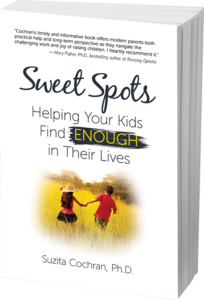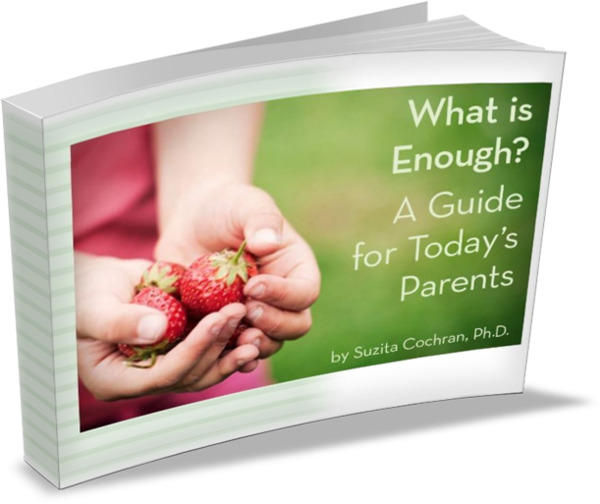
My daughter Annie’s orchestra class was a middle school highlight. Anyone with a middle schooler (or who’s been one), probably knows that highlights are hard to come by in that phase of life.
Annie had only learned to play the violin the year before and suddenly in orchestra class she was working on complex pieces of “real music.” I’ll admit that attending Annie’s orchestra concerts was more pleasant than experiencing her brothers’ ear-piercing band concerts during those years—which even our boys didn’t enjoy much.
Teacher Magic
Annie was lucky to land in the class of an amazing music teacher. This teacher was rather strict, and a little moody—who wouldn’t be in her shoes? However, she also walked the fine line of nudging kids out of their comfort zones—just far enough. She additionally possessed that “teacher magic” which made the kids want to push themselves to show her what they could do.
Annie went from being a kid who rarely practiced violin to one who played at home for an hour at a time. Twice weekly her teacher offered before-school practice sessions. When later in her 6th grade year Annie requested private lessons, Todd and I found ourselves quite willing to support an interest she was already actively pursuing. But still, private lessons are pricey. We needed to get creative.
After some thinking, we asked Annie’s older brothers if they knew violin students who might give lessons. Using this strategy, we found two high school girls whom Annie took lessons from. Both were cool, violin-playing role models for Annie—and their lesson fees didn’t break the bank at our house.
But all of this started with Annie being taught by an inspirational orchestra teacher. When her teacher suggested something, Annie was willing to try it. Because of this she got better and better at violin. I thanked Annie’s teacher at the time, but I really should send another note of appreciation. There weren’t many high points in my kids’ middle school experiences, but this was definitely one.
Soft Skills
As I look back on that experience, I can see that, as well as teaching music, Annie’s teacher was also teaching her students many “soft skill” life lessons. I recently read a book emphasizing the importance of these soft skills.
In You are Awesome: Find Your Confidence, and Dare to Be Brilliant at (Almost) Anything, Matthew Syed writes in an easy-to-take-in style for teens and tweens. Syed, who was a British table tennis champion and was even on the British Olympic team, offers various useful ways to motivate kids.
As a parent reading Syed’s book, I’m not sure who was more motivated, me or his teen readers!
After telling his story about being an average kid who became good at something by practicing over time in a variety of ways, Syed says,
So let’s forget those types of stories that we hear about people being “born gifted” or “naturally talented” when it comes to explaining how someone got really good at something. I’m here to reveal the truth, and the fact that it’s possible for anyone to get really good at (almost) anything—and that includes YOU.
Syed reminds kids, “No one wants to admit how hard they practice, so don’t believe anyone who tells you they are effortlessly brilliant or clever. They are probably lying.”
He then describes a “growth mindset”—which I have also written about previously. I’m obviously a fan.
People With Growth Mindsets Believe:
- Ability can be changed with practice.
- Putting in effort is the only way to get better at a skill.
- Mistakes happen. They are nothing to be ashamed of, and they show us our areas of struggle so we can work on improving our skills in these places.
- Feedback is essential. It shows you where and how you need to improve.
- Challenges are vital. Trying new things is the only way to learn.
- One can learn from others’ successes. Study the other person’s strategy, and consider how to add pieces of their technique to your practice.
Brain Plasticity
Syed even describes brain plasticity to kids in easy-to-understand terms:
If you walk the same route through a forest, day in and day out, then eventually you will create a path making it easier to walk though the forest the next time. Neural connections are the same. So, the more you practice math questions (or skateboarding tricks, or level 53 of Minecraft), the stronger the connections become, making it easier the next time you try.
He ends by reminding kids that not all practicing is equally helpful.
Not all practice is as useful at growing your brain and creating neural connections…The screw-your-face-up, grit-your-teeth kind of practice that makes you feel good about yourself afterward because you know you’ve achieved something is what your aiming for.
Getting Kids Off the Couch
These days when it’s so easy for kids to opt out of an activity or new class in exchange for an afternoon playing video games or time on social media, we parents need all the help we can get motivating our kids to try new things. Something about the upbeat nature of this quick-read book gave me hope. And for me hope is often the first step to changing something that’s not going well.
For most of us parents (myself definitely included) it’s hard to be a constant cheerleader. Syed’s book, and thinking back to Annie’s amazing orchestra teacher, gave my tired inner cheerleader the energy boost she needed.


 Sweet Spots: Helping Your Kids Find ENOUGH in Their Lives.
Sweet Spots: Helping Your Kids Find ENOUGH in Their Lives.

